#historial drama
Explore tagged Tumblr posts
Text




✩ The Double ─ Episode 29 (墨雨云间)
#the double#cdrama#chinese actor#chinese drama#wang xingyue#墨雨云间#王星越#wu jinyan#jiang li#xue fangfei#xiao heng#duke su#cdramasource#dramasource#dailyflicks#the double episode 29#the double spoilers#historial drama#mine
85 notes
·
View notes
Text
A murder mystery film set in a medieval village. After an outbreak of plague, the villagers make the decision to shut their borders so as to protect the disease from spreading (see the real life case of the village of Eyam). As the disease decimates the population, however, some bodies start showing up that very obviously were not killed by plague.
Since nobody has been in or out since the outbreak began, the killer has to be somebody in the local community.
The village constable (who is essentially just Some Guy, because being a medieval constable was a bit like getting jury duty, if jury duty gave you the power to arrest people) struggles to investigate the crime without exposing himself to the disease, and to maintain order as the plague-stricken villagers begin to turn on each other.
The killer strikes repeatedly, seemingly taking advantage of the empty streets and forced isolation to strike without witnesses. As with any other murder mystery, the audience is given exactly the same information to solve the crime as the detective.
Except, that is, whenever another character is killed, at which point we cut to the present day where said character's remains are being carefully examined by a team of modern archaeologists and historians who are also trying to figure out why so many of the people in this plague-pit died from blunt force trauma.
The archaeologists and historians, btw, are real experts who haven't been allowed to read the script. The filmmakers just give them a model of the victim's remains, along with some artefacts, and they have to treat it like a real case and give their real opinion on how they think this person died.
We then cut back to the past, where the constable is trying to do the same thing. Unlike the archaeologists, he doesn't have the advantage of modern tech and medical knowledge to examine the body, but he does have a more complete crime scene (since certain clues obviously wouldn't survive to be dug up in the modern day) and personal knowledge from having probably known the victim.
The audience then gets a more complete picture than either group, and an insight into both the strengths and limits of modern archaeology, explaining what we can and can't learn from studying a person's remains.
At the end of the film, after the killer is revealed and the main plot is resolved, we then get to see the archaeologists get shown the actual scenes where their 'victims' were killed, so they can see how well their conclusions match up with what 'really' happened.
#film ideas#plotbunny#murder mystery#detective stories#period dramas#middle ages#history#archaeology
26K notes
·
View notes
Text
people who don't study history will simply never understand the joy of reading historian beef. there's nothing like it
#when they're reviewing each other's work and they're just SHITTING ON IT????? wonderful#when you can tell the historian HATES whichever historical figure(s) they're writing about? incredible#one thing we must remember is that historians are just academic gossipers xx#what is JSTOR for if not to read the DRAMA#reading an absolutely SCATCHING rebuttal of an article on New England migration and honestly??? having a wonderful time#sometimes the history student just jumps out#history
5K notes
·
View notes
Text
I don't know who needs to hear this today but:
most adult women wore their hair up, on a normal day when going out in public, for most of western history from at least the late Middle Ages until the 1920s. even after that, wearing truly long, unstyled hair entirely loose was not common until the 1960s
not half-up. not in a ponytail. not braided with the braid hanging loose. at times trailing elements were involved, but the majority of the hair would still be pinned up. at times it was also a social norm that the hair would always be mostly or entirely covered when out of the house
and until around the early 19th century, little girls usually wore their hair up too, if it was long
when "putting one's hair up" became a specifically adult thing, around the 1830s or 40s, it was not related to marriage. it was something teen girls did around age 16 as a marker of social adulthood. even if she was unmarried, she'd wear her hair up. this attitude remained until the bob took over hair fashion in the 1920s, and even then, long hair was usually still worn up
obviously people can do what they want with their art but like. just. just please be aware of this
I have not reblogged so much Dracula fanart because the artist inadvertently made Mina and/or Lucy look uncomfortably young, hair-wise
3K notes
·
View notes
Text
the reluctance to acknowledge christianity in a lot of medieval-set fiction/fantasy means we're missing out on a lot of stories of bishops trying to assassinate each other
#the early 13th century bishops of waterford and lismore were high drama#people are getting tortured. there are swords embedded in the doors of cathedrals. etc#history#medieval
2K notes
·
View notes
Text

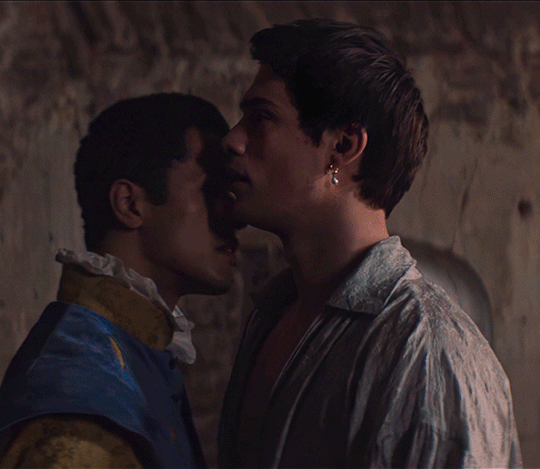
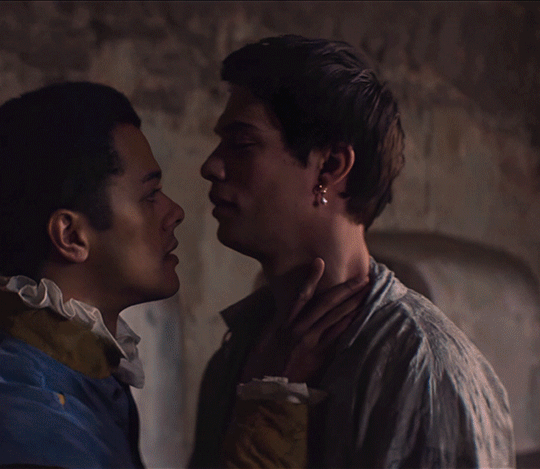
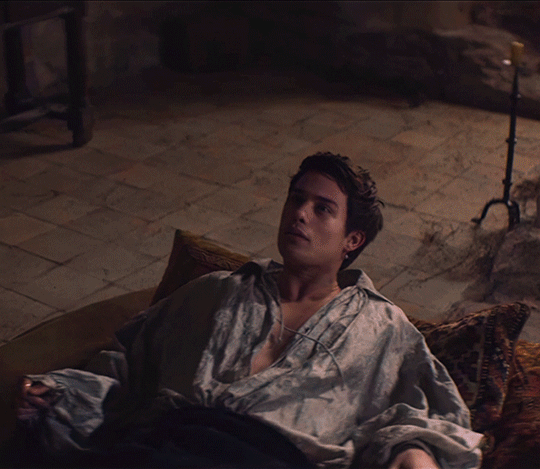
George Villiers & Peter Carr MARY & GEORGE (2024) · S1·EP4
#this shudve bn the hottest scene!#nicholas galitzine#mary and george#mary & george#dylan brady#george villiers#peter carr#perioddramaedit#queer#couple#kiss#affection#intimacy#desire#yearning#longing#period drama#queer media#queer history#jacobean#scotland#beautiful men
3K notes
·
View notes
Text

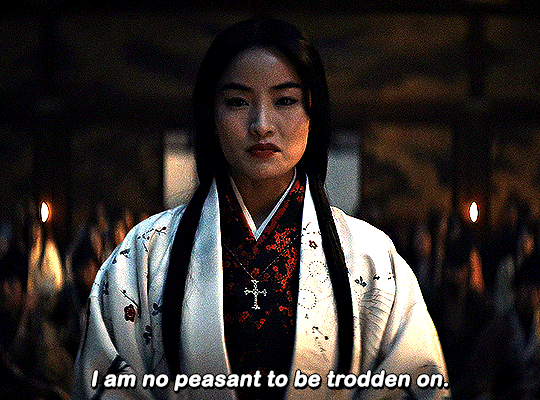

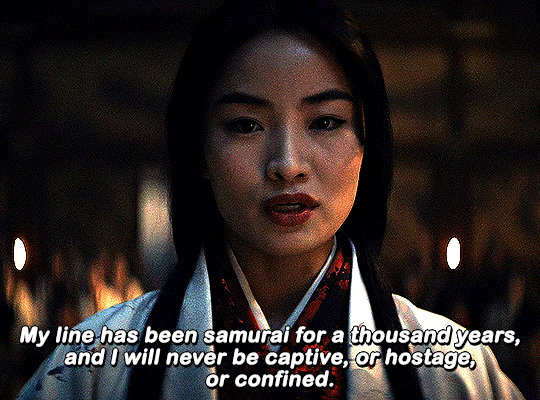

ANNA SAWAI as TODA MARIKO SHŌGUN — 1x09: "Crimson Sky" (2024)
#shogun#shogunedit#tvedit#shōgun#fx shogun#anna sawai#shogun 2024#cosmo jarvis#*#by zil#2020s#adventure#drama#history#usersugar#usersavana#tusertyler#shogun spoilers#war
3K notes
·
View notes
Text
Disclaimer: I know that some folks continue to wear some or all of these items in the 21st century. This is more asking what you wish would become fashionable again so you could wear it without receiving any second glances from strangers
#history#historic clothing#clothing history#fashion#clothing#period drama#jane austen#tumblr poll#tumblr polls#poll#polls#cottagecore-raccoon
4K notes
·
View notes
Text








"I love you."
#pluto the series#pluto series#pluto series ep7#oonmay#oon x may#mayoon#namtanfilm#namtan tipnaree#film rachanun#gmmtv#gl drama#thai gl#i am currently NOT breathing#thanks 4 checking in#😭😭😭#this is getting SO messy like damn#im so obsessed lmao#like they DID THAT#cant believe may ruined it#this couldve been the best sesbian lex scene in history
670 notes
·
View notes
Text
Romans, countrymen and lovers...
This has been a truly spectacular journey, we've had mistakes and slip ups (sorry Captain America fans!) but after over a YEAR, I am proud to announce our...
FINAL ROUND!!!
CHRIS KRATT VS CHRISTINE ROYCE!


Chris Kratt is known for his work on children shows and animal conservation!
"lesbian icon"
#ultimate chris tournament#wild kratts#total drama#marvel#jesus#history#total drama island#recreyo#sonic#the walten files#fallout new vegas#fallout#chris kratt#christine royce
1K notes
·
View notes
Text
Fic where after realizing his feeling charles looks up edwardian courting tactics because he CANNOT chance edwin misunderstanding him after rejecting him the first time. he does his research and after countless books and internet dives, he's reached a solution: he will propose marriage
#vio.txt#yes there were many fun rules of social interaction that have been romanticized by historial dramas#but this is far funnier#and usually thats how a courtship began with upper class couples since much of the time marriage and courtship were a financial ritual#but i think charles would see this and go. my bestie is emotionally repressed. he is edwardian.#conclusion: all edwardians are emotionally repressed and require direct action. bit weird but ill do it for him <3#dead boy detectives#dead boy detective agency#dbda#payneland#edwin payne#charles rowland#'two blokes can get married nowadays. i can ask for your hand in marriage properly n all isnt that brill'
1K notes
·
View notes
Text


I'm sincere in helping you.
✩ The Double ─ Episode 32 (墨雨云间)
#the double#cdrama#chinese drama#wang xingyue#墨雨云间#chinese actor#wu jinyan#王星越#cdramaedit#chinese actress#ye shijie#chen xinhai#jiang li#historial drama#dramaedit#asiandramaedit#asiandramasource#the double episode 32#the double spoilers
136 notes
·
View notes
Note
If the coats with hoods aren’t historically accurate, what coats did Chinese people wear prior to the modern period?
Hi! Thanks for the question, and sorry for taking ages to reply!
By "coats with hoods", I assume you're referring to the doupeng/斗篷 (cloak/cape) commonly seen in modern hanfu and guzhuang (drama costumes), like the one below (x):
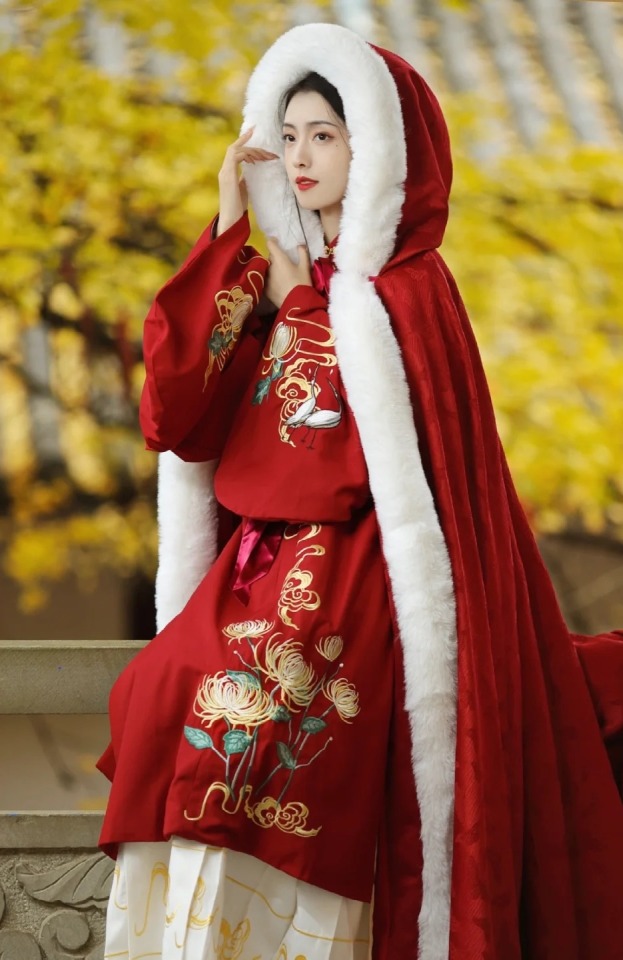
Chinese people did wear doupeng prior to the modern period, along with other kinds of coats. However, as I mentioned in my post here, historical Chinese doupeng did not have hoods attached to the cloak/cape. That is why many modern doupeng aren't considered historically accurate - because they have hoods attached. Below are examples of more historically accurate, hoodless doupeng (1/2):
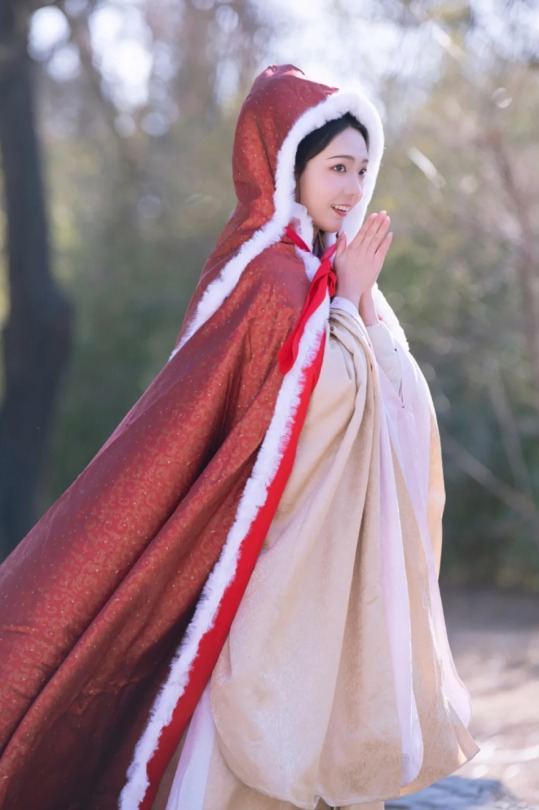
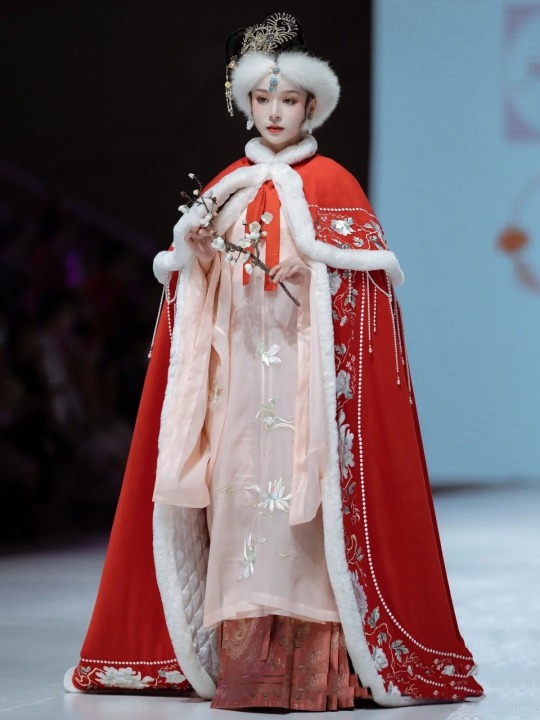
In the image on the above left, the model is wearing a separate, detached hood/hat called fengmao/风帽 (wind hat) which was historically worn to keep warm. Below - examples of fengmao (1/2):
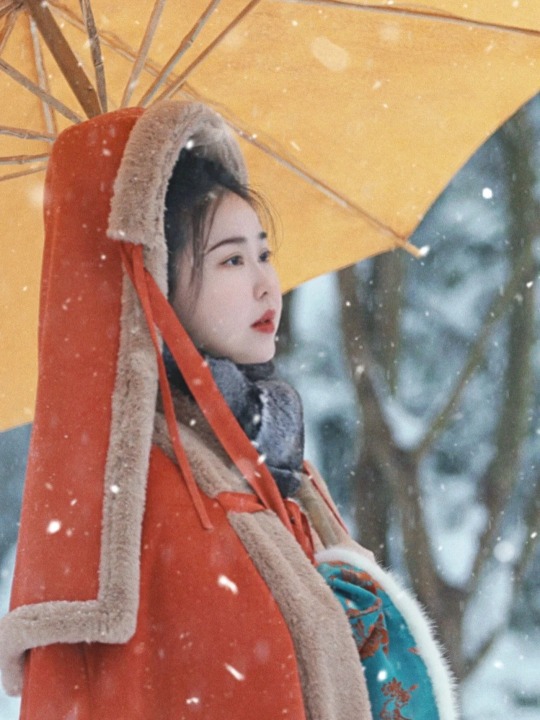

Historically, fengmao was often worn with doupeng when travelling during cold weather (x). Below - women wearing doupeng & fengmao in historical art (top row), and Chinese opera performers wearing doupeng & fengmao as part of their costumes (bottom row) (x):
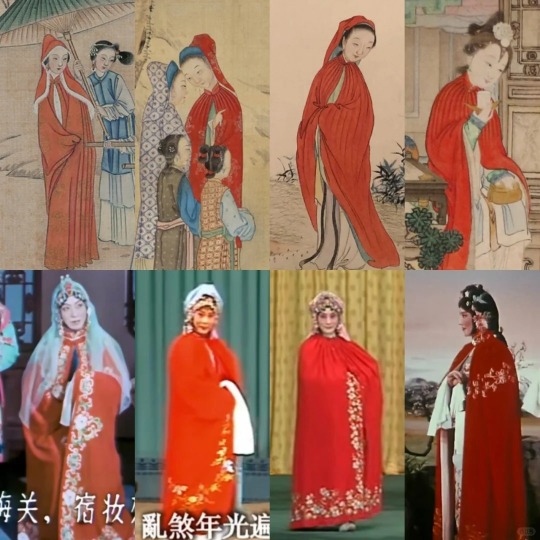
Oftentimes the doupeng & fengmao are matching, which can give the impression that they are attached - but if you look carefully, you can see that they are separate. Below - Chinese opera costume (x):
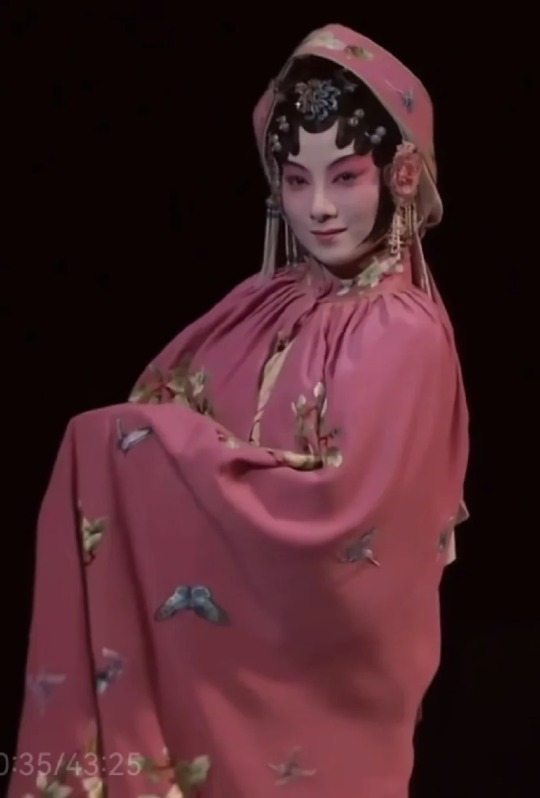
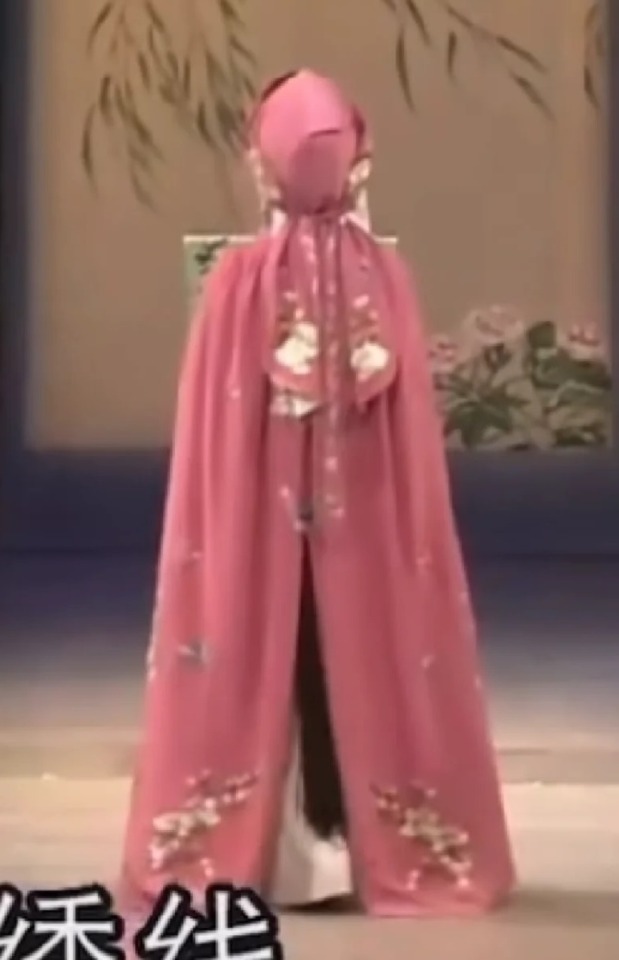
Below are historical photos of women wearing doupeng in 1920s Beijing - note how they are hoodless (1/2):
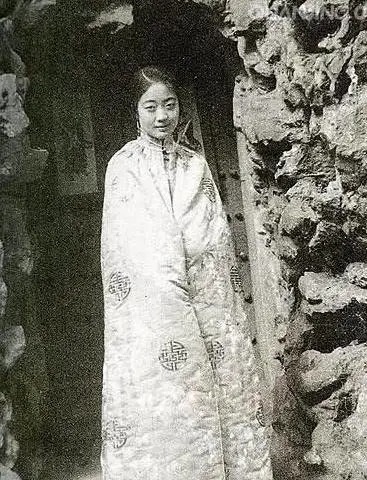
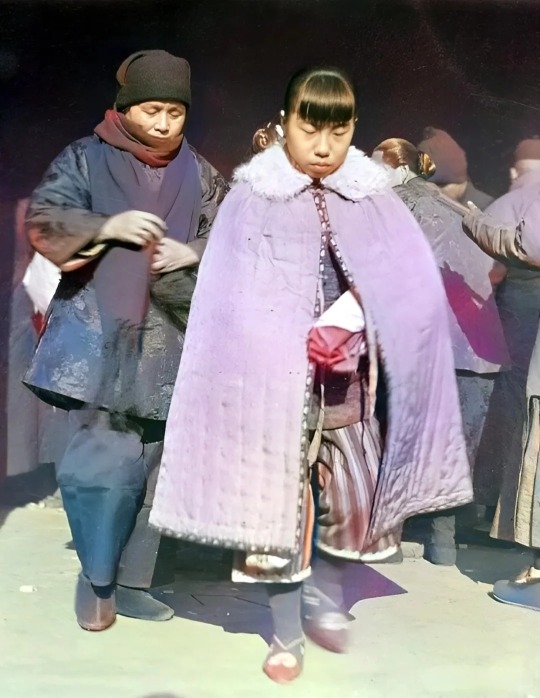
Hooded doupeng, in contrast, are more similar to historical western cloaks, such as the below American/European cloaks from the 18th century (1/2):


The hooded doupeng of modern hanfu are likely based on those seen in guzhuang dramas - another instance of drama costumes not being the most historically accurate (x):
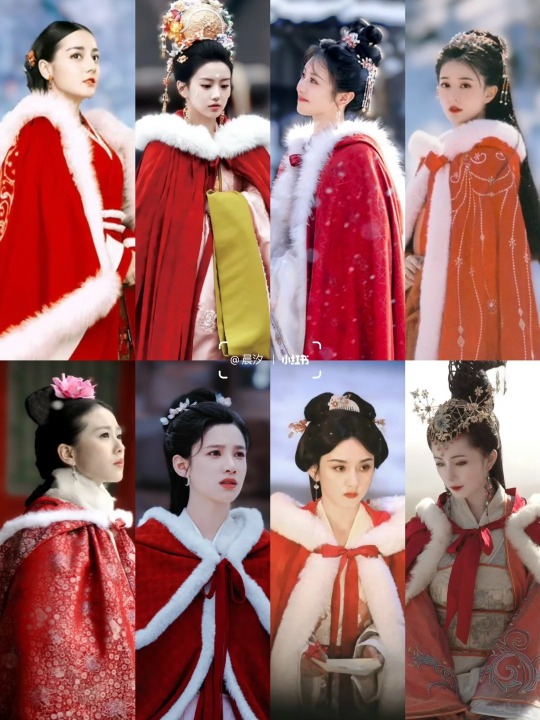
An example of a drama with a historically accurate depiction of doupeng & fengmao is the 1987 TV adaptation of Dream of the Red Chamber. As seen in the below images, the characters wear hoodless doupeng & occasionally matching fengmao as part of their winter wardrobe (1/2/3):

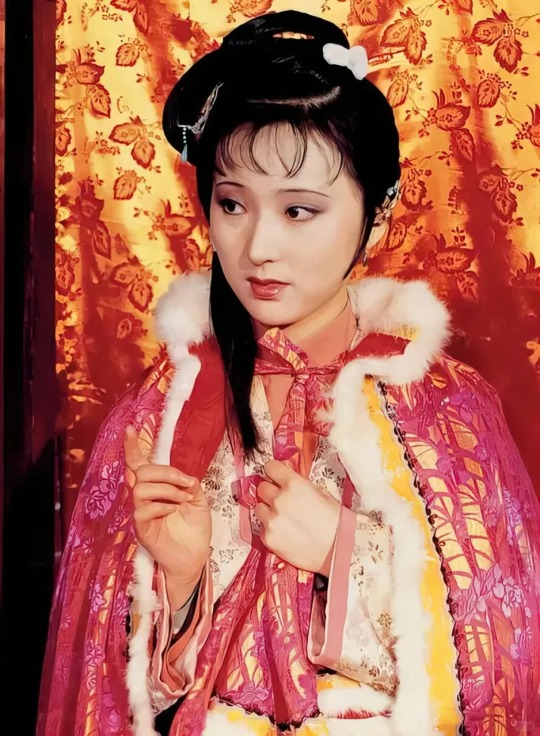

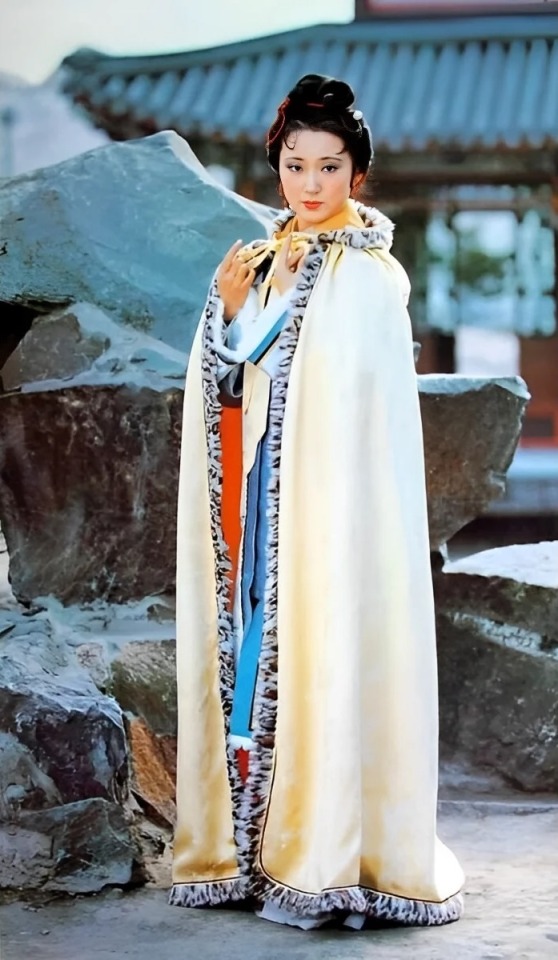
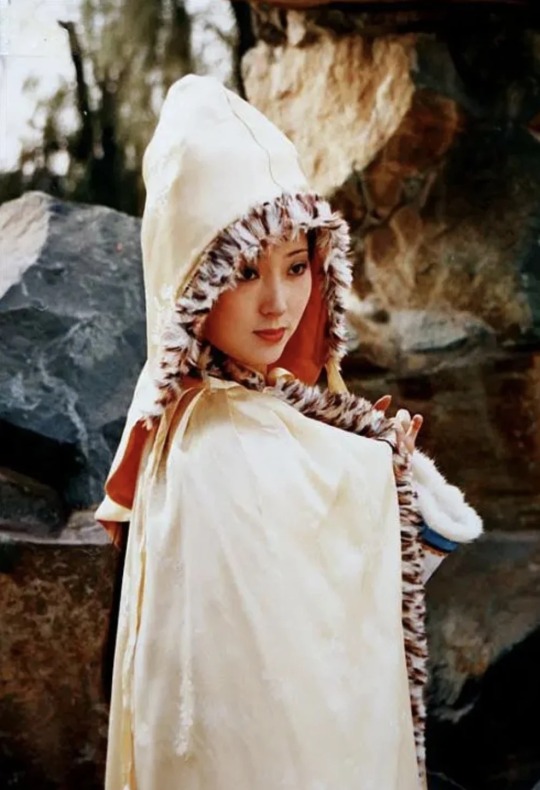
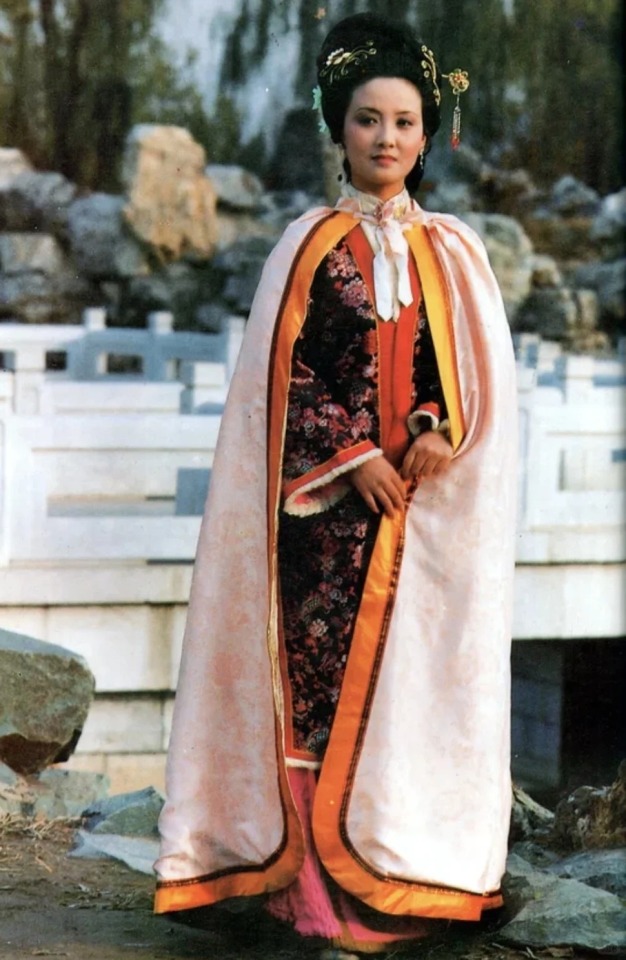

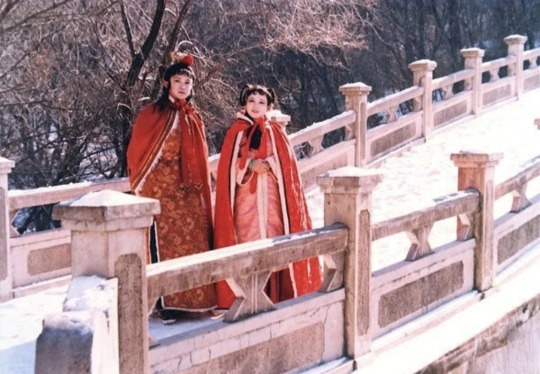
The 1994 TV adaptation of Romance of the Three Kingdoms also depicts historically accurate, hoodless doupeng & matching fengmao worn by men (x):

For more references, please check out my doupeng, fengmao, and winter wear tags.
Hope this helps!
#hanfu#doupeng#cloak#cape#fengmao#hats#winter wear#hanfu accessories#chinese opera#opera costume#xifu#drama costumes#dream of the red chamber#>500#china#history#reference#ask#reply#chinese clothing#chinese fashion#chinese culture
848 notes
·
View notes
Text








The Six Triple Eight (2024) dir. Tyler Perry
#filmedit#tyler perry#the 6888th Central Postal Directory Battalion#kerry washington#ebony obsidian#perioddramaedit#period drama#filmgifs#diversehistorical#wocedit#black women in history#bngifs#bnedit#the six triple eight#6888#six triple eight#fyeahmovies#black cinema#cinema
691 notes
·
View notes
Text
NEVER learn about historical fashion, it’ll ruin films for you. i’m trying to watch pride and prejudice (2005) for the first time and i’m shaking with rage
#it’s so jarring after the delight of the 1995 version#pride and prejudice#pride and predjudice 2005#period drama#fashion history#historical fashion#period fashion#regency fashion#mine
749 notes
·
View notes
Text




i cant believe akis afraid of thunderstorms………….
EDIT: oh my gosh I didnt realize this I feel sick

#akishinji#akihiko sanada#shinjiro aragaki#persona 3#p3#persona 3 reload#my art#Linktoo art#comic#sorry shinji is sooo doting on him even though he pretends not to be#and aki's deep longing to reminisce about their shared history and nostalgia.. thats so crazy#plus the fact aki's persona magic being electric#his fear of lightning .............. and yet he has it#putting the drama CD link in my replies
1K notes
·
View notes